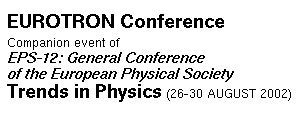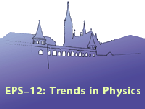 |
 |
 |
In calculations within lattice QCD at finite temperature a phase transition is found where partons become deconfined and chiral symmetry is restored. The new phase formed is called the Quark-Gluon Plasma. The current best temperature for the phase transition is 170 MeV at zero net baryon density. With increasing density the critical temperature decreases. In the laboratory temperatures in this range can be achieved in collisions of atomic nuclei at relativistic energies. The experimental program to study the formation of the Quark-Gluon Plasma started at the CERN SPS in 1986, initially with light beams of oxygen and sulfur of 200 GeV per nucleon. Since 1994 also lead beams have been used. This talk will summarize results obtained by the seven experiments in this program. There is strong evidence from the combined data on production of hadrons, di-leptons and photons that indeed in such heavy ion collisions a new form of matter is formed. The system is at the critical temperature at the time when hadron yields are frozen in and at a significantly higher energy density earlier. The various observables and their connection to the Quark-Gluon Plasma formation will be discussed. A short outlook to the collider program will be given.
The following files are available:
- abstractstachel.pdf [8568 bytes]
- abstractstachel.doc [37888 bytes]
Eurotron Conference is supported by European Commission, High-Level Scientific Conferences